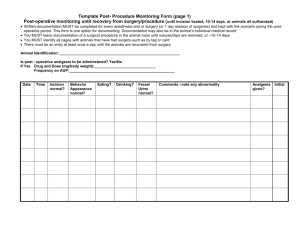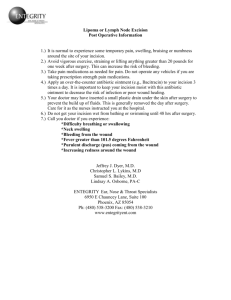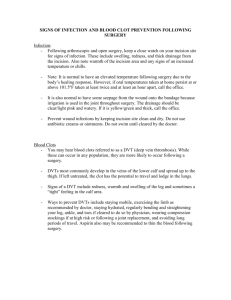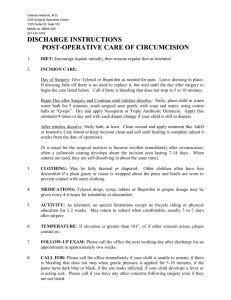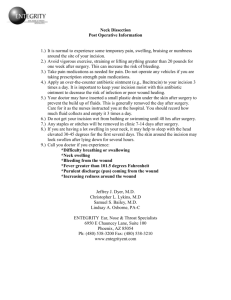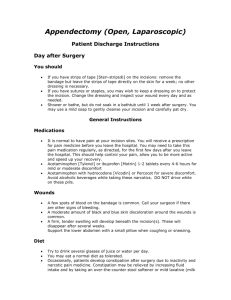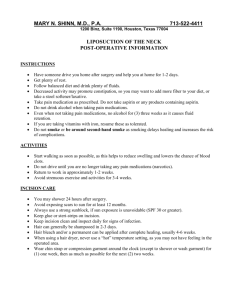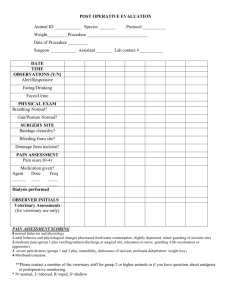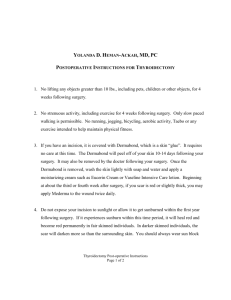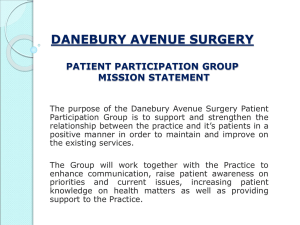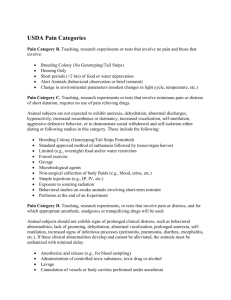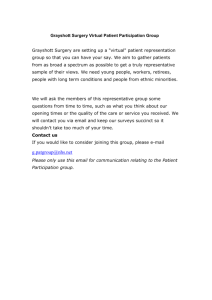POST-OPERATIVE MONITORING AND EVALUATION FOR RODENTS
advertisement
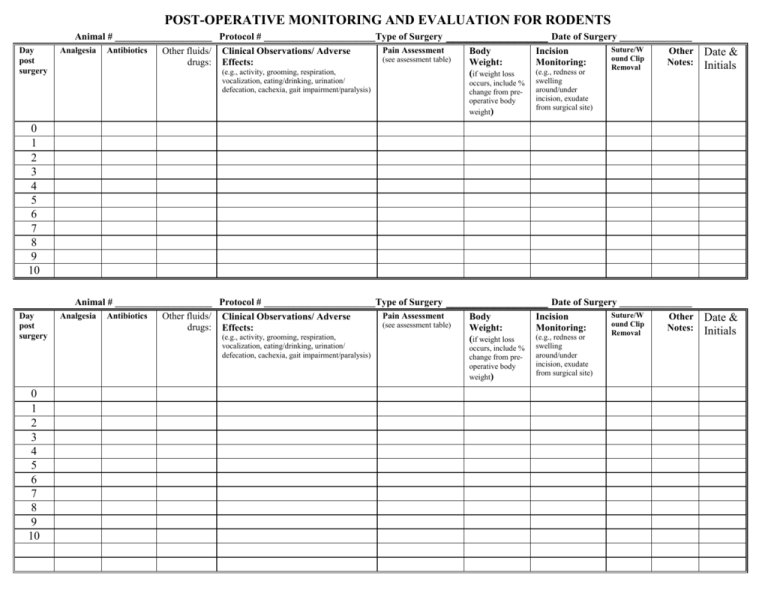
POST-OPERATIVE MONITORING AND EVALUATION FOR RODENTS Animal # ____________________ Protocol # _______________________Type of Surgery _______________ Date of Surgery _______________ Day post surgery Analgesia Antibiotics Other fluids/ drugs: Clinical Observations/ Adverse Effects: (e.g., activity, grooming, respiration, vocalization, eating/drinking, urination/ defecation, cachexia, gait impairment/paralysis) Pain Assessment (see assessment table) Body Weight: (if weight loss occurs, include % change from preoperative body weight) Incision Monitoring: (e.g., redness or swelling around/under incision, exudate from surgical site) Suture/W ound Clip Removal Other Notes: Date & Initials 0 1 2 3 4 5 6 7 8 9 10 Day post surgery Animal # ____________________ Protocol # _______________________Type of Surgery _______________ Date of Surgery _______________ Suture/W Analgesia Antibiotics Pain Assessment Other fluids/ Clinical Observations/ Adverse Body Incision Other ound Clip (see assessment table) drugs: Effects: Weight: Monitoring: Notes: Removal (e.g., activity, grooming, respiration, (e.g., redness or (if weight loss vocalization, eating/drinking, urination/ defecation, cachexia, gait impairment/paralysis) 0 1 2 3 4 5 6 7 8 9 10 occurs, include % change from preoperative body weight) swelling around/under incision, exudate from surgical site) Date & Initials Visual Activity 1 Inactive a b 2 Isolated Y N 3 Walking on tiptoe Y N 4 Hunched posture a b c 5 Pinched face a b c 6 Unkempt coat a b c 7 *Type of breathing 8 Twitching a b c 9 Licking at Incision a b c 10 Stretching a b c 11 Not inquisitive and alert a b c 12 Not eating a b c 13 Not drinking a b c 14 Vocalization on gentle palpation a b c 15 Pale or sunken eyes a b c 16 Dehydration a b c 17 Distended abdomen/swollen a b c 18 ** Diarrhea 0 to 3 (+m or +b) 19 Nothing abnormal detected c ON HANDLING Scoring Details * Breathing: R = rapid; S = shallow; L = labored; n = normal **0 = normal; 1 = loose feces on floor; 2 = pools of feces on floor; 3 = running out on handling +m = mucus; b = blood Refer to condition chart: 4: normal to 1: emaciated #nd = not determined Y= yes N= No Scoring Symbols a. mild b. moderate c. serious Humane Endpoints and Actions 1. Any animal showing signs of coma within the first 24-48 hr will be euthanized. 2. Any animals losing more than 20% of its start weight at any time will be euthanized. 3. Any animal showing tiptoe or slow ponderous gait will be euthanized or staff will confer with the veterinarian staff. 4. Inform veterinarian and principal investigator if more than one clinical sign occurs. Reference: Developed from: ILAR Journal V41(2) 2000 Humane Endpoints for Animals Used in Biomedical Research and Testing
